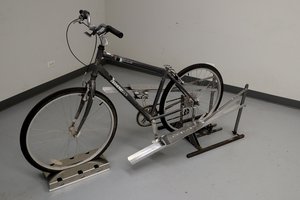In the US, USPS has an equivalent "flats" or large envelope mailing category which defines letters that are over "6-1/8 inches high OR 11-½ inches long OR ¼ inch thick" and are "up to 12 inches high x 15 inches long x ¾ inch thick". However this category of mail has a minimum flexibility requirement, as these large envelopes get sorted by a fully automated flat sorting machine (AFSM 100).
This project aims to test whether these large mail items arriving internationally to the US are actually sorted in the AFSM or if they are handled as a parcel instead, when they don't meet the 201.4.3 flexibility requirements outlined in the Commercial Letters, Flats, and Parcels Design Standards.
The experiment looks to send several 220x160x20mm rigid cardboard mailers to various places around the US (from Australia), which contain passive strain indicators (for both X and Y flex), to test how these mail items are handled. The indicators and the boxes will be inspected visually to check for indications that it has passed through an automatic sorting machine.
 Blecky
Blecky

 Makerfabs
Makerfabs
 8bit-bunny
8bit-bunny
 Joseph Prosnitz
Joseph Prosnitz